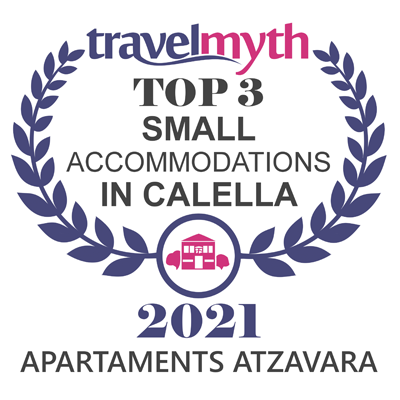City located 50 km south of Calella, capital of Catalonia, offers many activities of tourist interest.
If you plan to get there by car you can take the NII or take the C-32 motorway which costs approximately €3.50 between the two tolls. Parking is very expensive and the fines and towing are very expensive, so we recommend leaving your car in the Ona Glories parking lot at the entrance to the city where you can take the metro and have special rates for parking for 6 hours for €5.75 and up to 24 hours for €17.30. Before going there you can check the rates and location at www.bsmsa.cat.
If you opt for public transport you can check timetables and fares at www.renfe.com.
Below we highlight some activities that can be done in Barcelona, for more information consultwww.barcelonaturisme.com.
Basilica of the Sagrada Família; The best-known work of architect Antoni Gaudí, construction began in 1882 and is expected to be completed in 2030.
Las Ramblas; A promenade that runs from Plaça de Catalunya, the nerve centre of the city, to the old port. The promenade is full of people during the day and until late at night. It is full of newsstands, flowers and birds, street performers, cafes, restaurants and shops. Craft markets, as well as painters and illustrators, are usually set up near the port. Walking along La Rambla you can see several buildings of interest, such as the Palau de la Virreina, as well as the La Boquería market and the famous Liceu theatre.
Picasso Museum; It is the reference center for knowledge of the formative years of Pablo Ruiz Picasso. Opened to the public in 1963, it houses a collection of more than 3,800 works, which make up the permanent collection, and offers an extensive program of temporary exhibitions.
www.museupicasso.bcn.cat
Zoo; It opened its doors in 1892, currently houses 2,200 specimens of more than 315 species in 13.5 hectares. The entrance fee is €17 for adults and €10.20 for children aged 3-12.
Aquarium; a recreational and educational marine center located on the Moll d’España in the Port Vell, next to the sea. An ideal place to discover the seabed, especially the Mediterranean. Admission costs €18 for adults and €13 for children aged 3-12.
www.aquariumbcn.com
MACBA; In 1995, the Museum of Contemporary Art of Barcelona opened its headquarters in the heart of the Raval neighborhood, in a new building designed by the American architect Richard Meier. Since then, the Museum has become a pioneering institution in the dissemination of contemporary art and cultural practices. It offers traveling exhibitions, check opening hours, prices and exhibitions at www.macba.cat
Barri de Gràcia; It is located just one stop from the beginning of Passeig de Gràcia but it seems like a completely different world. Gracia was an independent town until the end of the 19th century. The area is populated by artists and bohemian crowds. It has a wide diversity of races and has a large concentration of international restaurants. Plaça de Sol is the best known place in this neighborhood. It is full of terrace cafes and at night it is the place that people choose to go for a drink. Metro stop Diagonal or Fontana (green line) or also Joanic (yellow line).
Barri de La Barceloneta; Fishermen were the first to settle in the 18th century in this area by the sea, currently known as La Barceloneta. Speaking of food, La Barceloneta offers the best seafood in the area. On the other hand, if you can, walk through the built-up part of the area, there are a lot of cafes and ice cream parlors, on the Passeig Joan de Borbó, you will find the beach where there are many “chiriguitos”.



